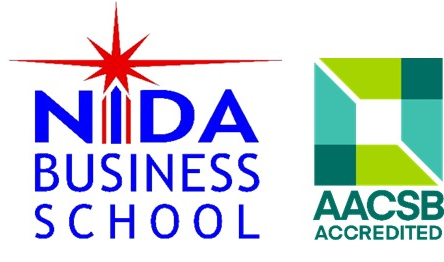Internal Barriers of Energy Management Effectiveness by Using Reverse Logistics with Auto-Parts Industry in Thailand
Keywords:
revers logistics, auto-parts industries, energy management effectiveness, Thailand industries, internal barriersAbstract
This research was conducted in order to study the effectiveness of energy management when reverse logistics was used in the auto-parts industry in Thailand and to investigate internal barriers that affected energy management effectiveness. Purposive random sampling was used to select the samples from 20 auto-parts industry companies consisting of 10 Tier 1 companies, 5 Tier 2 companies and 5 Tier 3 companies. The total number of participants was 1,120 employees. A 5-point rating Likert scale questionnaire was used to collect the data. The data were analyzed for descriptive analysis using SPSS and for confirmatory factor analysis (CFA), and single level Structural Equation Modeling analysis (SEM) using Mplus. The results showed that the energy management effectiveness of using reverse logistics with the auto-parts industry in Thailand could be measured by three dimensions including cost (COS) with the factor loading of 0.882, time (TIM) with the factor loading of 0.848, and reliability (CON) with the factor loading of 0.799. The prediction power was 76.8%. Moreover, it was found that there were four internal barriers, with the factor loading of 0.670, that affected that energy management effectiveness of using reverse logistics with the auto-parts industry in Thailand including: 1) finance (b = 0.857); 2) internal environment (b = 0.829); 3) organizational structure (b = 0.771); and
4) individual characteristics (b = 0.910).
References
Abdulrahman, M. D., Gunasekaran, A., & Subramanian, N. (2013). Critical barriers in implementing reverse logistics in the Chinese manufacturing sectors. International Journal of Production Economics, 147(B), 460-471.
Álvarez-Gil, M. J., Berrone, P., Husillos, F. J., & Lado, N. (2007). Reverse logistics, stakeholders’ influence, organizational slack, and managers’ posture. Journal of Business Research, 60(5), 463-473.
Cagno, E., Worrell, E., Trianni, A., & Pugliese, G. (2013). A novel approach for barriers to industrial energy efficiency. Renewable and Sustainable Energy Reviews, 19, 290-308.
Chan, F. T. S., Chan, H. K., & Jain, V. (2012). A framework of reverse logistics for the automobile industry. International Journal of Production Research, 50(5), 1318-1331.
Cherrington, D. J., (1994). Organizational Behavior the Management of Individual and Organizational Performance (2nd ed). Boston, MS: Allyn & Bacon.
Cronbach, I. J. (1970). Essentials of Psychological testing (3rd ed). New York, NY: University of Chicago Press.
Finnegan, R., (1994). “Recovring Academic Community” What Do We mean?. In R. Barnmett (Ed.), Academic Community Discourse or Discord?: Higher Education Policy Series 20 (pp. 3-20).Bristol, PA: Jessica Kingsley Publisher, Ltd.
González-Torre, P., Álvarez, M., Sarkis, J., & Adenso-Díaz, B. (2010). Barriers to the implementation of environmentally oriented reverse logistics: Evidence from the automotive industry sector. British Journal of Management, 21(4), 889-904.
Ho, G. T. S., Choy, K. L., Lam, C. H. Y., & Wong, D. W. C. (2012). Factors influencing implementation of reverse logistics: A survey among Hong Kong businesses. Measuring Business Excellence, 16(3), 29-46.
Hodge, B. J., & Anthony, W. P., (1994). Organization Theory (4th ed.). Boston, MA: Allyn & Bacon.
Ivancevich, J. M. and Donnelly, J. H. (1973). Organizational: Structure, Process, Behavior. Texas: Business Publications, Inc.
Lau, K. H., & Wang, Y. (2009). Reverse logistics in the electronic industry of China: A case study. Supply Chain Management: An International Journal, 14(6), 447-465.
Liu, X., Yamamoto, R., & Suk, S. (2012). A survey analysis of energy saving activities of industrial companies in Hyogo. Journal of Cleaner Production Japan, 66, 288-300.
Lussier, R. N. (2007). Organizational climate and human relation in organization: Applications and skill building (6th ed.). New York: McGraw-Hill.
Luthans, F. (2002). Organizational Behavior (9th ed.). New York: McGraw-Hill. Ministry of Energy. (2011). 20 Year Energy Efficiency Development Plan (2011-2030). Retrieved March 25, 2016 from http://www2.eppo.go.th/encon/ee-20yrs/EEDP_Eng.pdf
Ministry of Energy (2015). Energy Situation January-May 2015. Retrieved March 25, 2016 from http://www4.dede.go.th/dede/images/stories/stat_dede/sit_58/sit_jan_may.pdf
Office of National Economics and Social Development Board. (2013). Thailand 2nd Logistics Development Strategic Plan (2013-2017). Retrieved March 25, 2016 from http://www.news.mot.go.th/motc/portal/graph/logistic2.pdf
Ravi, V., & Shankar, R. (2005). Analysis of interactions among the barriers of reverse logistics.Technological Forecasting and Social Change, 72(8), 1011-1029.
Robbins, S. P., (1993). Organizational Behavior: Concept, Controversies and Application (6th ed.). New Jersey: Practice-Hall.
Schneider, B. M. (1990). Managing Organization Behavior. New York : John Wiley & Sons.
Scott, W. R. (1992). Organizations Rational, Natural and Open System (3rd ed.). New Jersey: Prentice-Hall.
Smircich, L. (1983). Concept of culture and organizational analysis. Journal of Administrative Science Quarterly, 28(3), pp. 339-358
Steers, R. M., (1977). The Organizational effectiveness: A behavioral View. Santa Monica, CA: Goodyear Publishing.
Stringer, R. (2002). Leadership and organization climate. New Jersey: McGraw-Hill
Tan, A. W. K., & Hosie, P. (2010). Reverse logistics operations in Singapore to support Asia pacific regions. International Journal of Electronic Customer Relationship Management, 4(2), 196-208.
Thailand Automotive Institute, & Ministry of Industry. (2012). Master Plan for Automotive Industry 2012-2016. Retrieved March 30, 2016 from http://www.thaiauto.or.th/2012/backoffice/file_upload/research/11125561430391.pdf
Vecchio, R. R. (1991). Organization behavior. Chicago: The Dryden Press.
Zhu, Q., & Geng, Y. (2010). Drivers and barriers of extended supply chain practices for energy saving and emission reduction among Chinese manufacturers. Journal of Cleaner Production, 40,6-12.

Downloads
Published
How to Cite
Issue
Section
License
Copyright (c) 2024 NIDA Business School, National Institute of Development Administration

This work is licensed under a Creative Commons Attribution-NonCommercial-NoDerivatives 4.0 International License.


